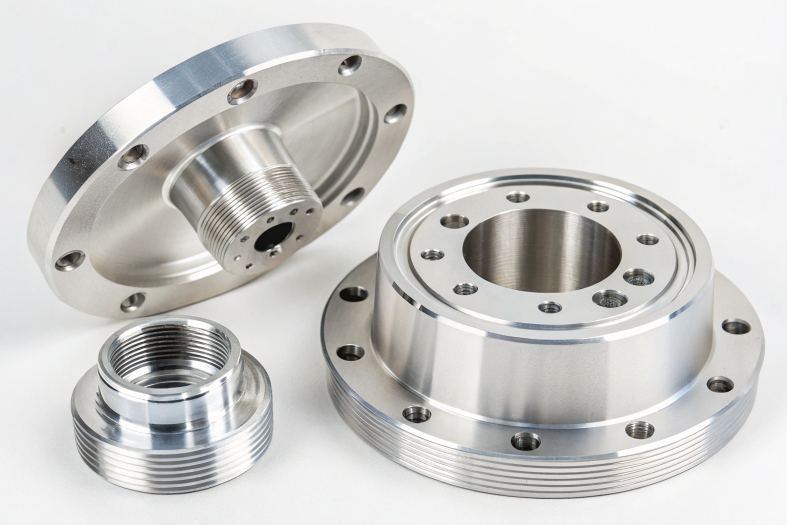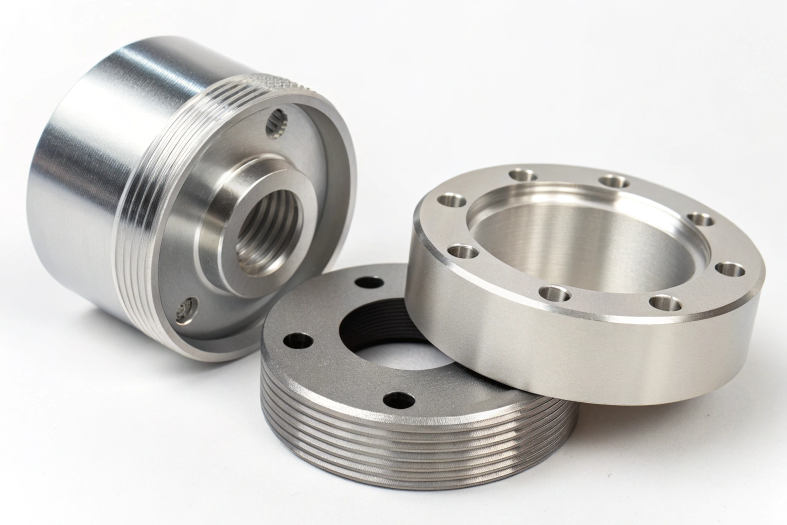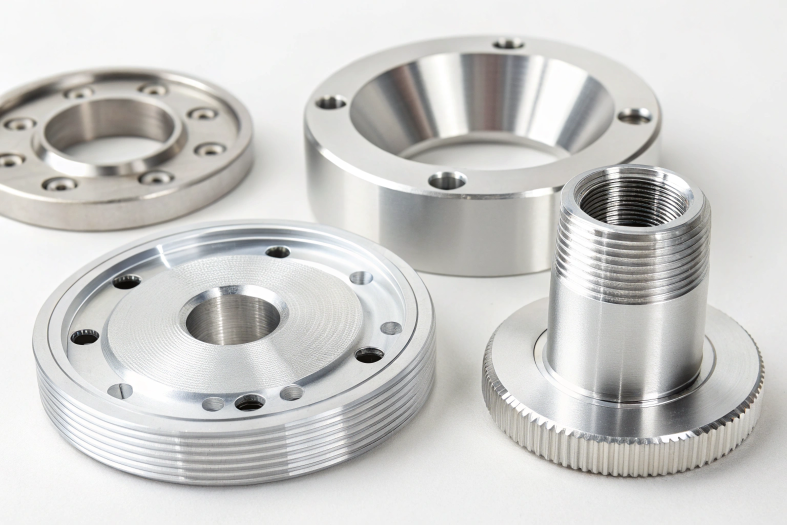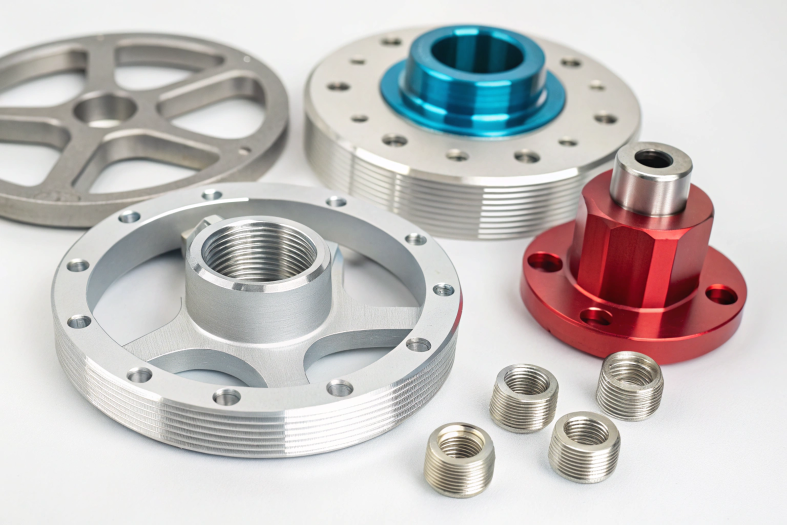When selecting materials for CNC machining, choosing aluminum could be the key to your project's success. However, with so many options available, you might wonder: why does aluminum stand out? Don’t worry—this article will break down the unique advantages of aluminum in CNC machining to help you make an informed decision.
Direct Answer:
Aluminum is ideal for CNC machining due to its lightweight, high strength, machinability, and corrosion resistance, making it perfect for aerospace, automotive, and precision industries.

Properties and Advantages of Aluminum
Lightweight
Aluminum's density is just 2.7 g/cm³, roughly one-third that of steel. This extreme lightness translates into significant benefits in applications like aerospace and automotive, where reducing weight enhances fuel efficiency, payload capacity, and overall performance. For example:
- Replacing steel with aluminum in aircraft structures can lower fuel consumption by up to 15%.
- Automotive components like engine blocks or suspension arms made from aluminum reduce vehicle weight without compromising strength.
High Strength-to-Weight Ratio
Aluminum alloys, such as 6061 and 7075, provide tensile strengths ranging from 200 MPa to 600+ MPa, depending on tempering and alloy composition. This makes aluminum capable of withstanding mechanical stress in demanding applications, such as aerospace wing components or high-performance bicycle frames, while keeping designs lightweight.
Machinability
Aluminum is one of the most machinable materials in the manufacturing world. Its properties bring specific CNC advantages:
- Tool Longevity: Reduced abrasion extends the lifespan of carbide tools, minimizing downtime and tool replacement costs.
- Faster Machining: Aluminum supports cutting speeds exceeding 3,000 surface feet per minute (SFM), significantly boosting productivity.
- Heat Management: With a thermal conductivity of 205 W/m·K, aluminum dissipates heat effectively during machining, reducing the risk of thermal distortion and maintaining dimensional accuracy.
Corrosion Resistance
Aluminum naturally forms a protective oxide layer, which shields it from environmental degradation. Key advantages include:
- Resistance to saltwater environments, making it suitable for marine components.
- Enhanced durability with anodizing, which provides customizable colors and increased surface hardness.
Thermal and Electrical Conductivity
Aluminum’s thermal conductivity is among the highest of all metals, making it indispensable in electronics and heat management:
- Heat Sinks: Used in LEDs and processors to dissipate heat efficiently.
- Electrical Conductors: Its conductivity of 37.7 MS/m provides a cost-effective alternative to copper in power distribution systems.

Cost-Effectiveness of Aluminum
Lower Machining Costs
Compared to harder materials like stainless steel, aluminum’s machinability leads to:
- Shorter machining cycles, reducing energy consumption and labor costs.
- Lower tooling expenses, as aluminum causes less wear and tear on cutting tools.
Sustainability and Recyclability
Aluminum is one of the most sustainable materials available:
- Recyclability: Nearly 100% recyclable with no loss in quality, making it an eco-friendly choice.
- Energy Efficiency: Recycling aluminum consumes only 5% of the energy required for primary production, significantly lowering the carbon footprint.
Common Aluminum Alloys and Their Applications
6061 Aluminum
- Properties: Excellent corrosion resistance, weldability, and medium-to-high strength.
- Applications: Aerospace frames, automotive components, and industrial machinery.
- CNC Note: Ideal for versatile applications requiring a balance of machinability and strength.
7075 Aluminum
- Properties: High strength, excellent fatigue resistance, but less corrosion-resistant than 6061.
- Applications: Aircraft structures, military-grade components, and high-performance sports equipment.
- CNC Note: Requires precise tooling and slower speeds due to its hardness.
5052 Aluminum
- Properties: Superior corrosion resistance and moderate strength.
- Applications: Marine hardware, chemical tanks, and pressure vessels.
- CNC Note: Best suited for components exposed to harsh environments.
Special Alloys
- 2024 Aluminum: Known for fatigue resistance in aerospace.
- 5083 Aluminum: Exceptional corrosion resistance for marine applications.
- 7050 Aluminum: Ideal for high-stress aerospace components requiring excellent stress corrosion resistance.

Industry Applications of Aluminum
Automotive
- Example: Lightweight aluminum engine blocks improve fuel efficiency and vehicle dynamics.
- Key Benefits: Reduced weight, improved corrosion resistance, and high recyclability.
Aerospace
- Example: CNC-machined wing spars and fuselage panels made from 7075 aluminum provide strength without excess weight.
- Key Benefits: High strength-to-weight ratio and tight tolerances for safety-critical applications.
Medical Equipment
- Example: Durable and lightweight surgical instruments or device housings made from 6061 aluminum.
- Key Benefits: Sterilizable, lightweight, and corrosion-resistant for long-term reliability.
Electronics
- Example: Heat sinks and casings for high-performance processors and batteries.
- Key Benefits: Superior heat dissipation and electromagnetic shielding.
Renewable Energy
- Example: Aluminum battery enclosures for electric vehicles or lightweight solar panel frames.
- Key Benefits: Long-lasting performance in demanding environments.
Advantages of Aluminum in CNC Machining
High Precision
Aluminum parts can achieve tolerances as tight as ±0.005 mm, essential for applications like aerospace and medical devices. Its stability during machining ensures consistent dimensional accuracy.
Complex Geometry
Aluminum’s machinability allows for the creation of intricate designs, such as:
- Thin walls and deep cavities for lightweight designs.
- Under-cuts and internal channels for optimized performance.
Faster Turnaround
Due to its high cutting speeds, aluminum enables:
- Rapid prototyping for faster product development.
- Efficient batch production for cost savings on large-scale projects.

Considerations When Machining Aluminum
Tool Selection
- Carbide Tools: Use high-speed steel (HSS) or carbide tools with polished flutes to minimize material adhesion.
- Coatings: Tools with TiAlN (titanium aluminum nitride) coatings reduce chip welding and extend tool life.
Cutting Parameters
- Speeds and Feeds: Cutting speeds of 300–1,000 SFM and feed rates of 0.1–0.3 mm/tooth are optimal for most aluminum alloys.
- Coolant: Water-soluble coolants prevent overheating and material sticking.
Surface Treatments
- Anodizing: Enhances corrosion resistance and aesthetics with a durable oxide layer.
- Powder Coating: Adds a protective, visually appealing finish.
- Polishing: Provides a smooth, reflective surface ideal for decorative applications.

Conclusion: Why Aluminum is the Best Choice for CNC Machining
Aluminum combines the best properties for CNC machining—lightweight, high strength, corrosion resistance, superior machinability, and cost-effectiveness. Its versatility spans industries from aerospace to renewable energy, making it an indispensable material for precision manufacturing.
FAQ:
Why is aluminum good for machining?
Aluminum is good for machining because it is lightweight, soft, and has excellent machinability. Its low density reduces tool wear, and it allows for high-speed machining with smooth finishes. Additionally, aluminum dissipates heat efficiently, preventing deformation during processing.
What is the best aluminum for CNC?
The best aluminum for CNC depends on the application, but 6061 is widely used due to its balance of strength, corrosion resistance, and machinability. For higher corrosion resistance, 5052 is ideal, while 7075 is preferred for applications requiring high strength.
Which aluminum grade is best for machining?
6061 is often considered the best for machining because of its versatility, excellent corrosion resistance, and ease of cutting. For superior machinability, 6063 or 2024 may also be used, depending on specific project needs.
Is cast aluminum stronger than CNC aluminum?
No, cast aluminum is generally not stronger than CNC aluminum. Cast aluminum is less dense and may contain internal voids, reducing strength. CNC-machined aluminum, especially from grades like 6061 or 7075, provides superior structural integrity and strength.


